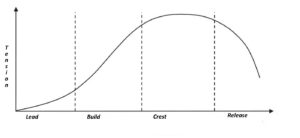Is sadness locking you down? It can do that, it doesn’t own you. So what is the best way to deal with sadness? Do this….
You’ve got to feel it
Sadness can run deep and wide. It’s supposed to. If you’re sad, even for a long time, you’re doing it right. We are designed to respond to sad triggers. There’s no alternative: when something is sad, we need to go there.
The trouble comes from trying to stuff sadness like a camel storing water. It’s also a problem to boldly ignore it; pride is no excuse to hide sad feelings. Each of us ought to have a reasonable time and place for allowing sadness. There are good physiological reasons to let feelings work on us. Our human systems have built-in ways of responding to sad triggers that are very healthy, provided we allow them. If that’s a new idea for you, stay with this article, and it will get clearer.
Storing up sadness
The unhealthy way to deal with sadness is to Ignore or suppress the sad feelings. Much better is to give yourself a full experience of sadness. Yes: give this to yourself. If that’s in the moment you’re triggered, it’s best. Wait if you must, but make the effort to let sadness have its way with you. There’s only so much unexperienced sadness – or any other feeling – that anyone can successfully contain for long without some kind of psychological repercussion.
Letting it flow
When we overflow with sadness – or any other feeling – it can leak out and cause a mess. Who wants to hang out at a friend’s house where the sewer is backed up or with someone who’s so melancholy all the time? Where’s the capability for joy? It’s buried under a huge weight of unexperienced grief. To clear the clog, allow the feeling.
This may be difficult, especially if – like me – you were taught in your childhood home to keep “unwanted” feelings stacked up inside you. “Don’t be sad,” you might have been told about any number of things: the death of a pet or a grandparent, a missed opportunity, moving away from your childhood home and friends. Those are all great reasons for the sadness that I was taught not to feel. Much easier to feel the sadness when it’s triggered.
Really allowing the feeling of sadness for the first time can be scary. Often, that’s only because we have to learn how it feels. To become familiar with an emotion takes practice, especially if your training was to avoid or suppress the emotion rather than experience it. Fear or anger can be easier to explore because they feel more immediate and adrenalin-charged than sadness, but the process is the same.
Do this
What’s the best way to connect with sadness and really feel it safely? I’m a big advocate of using music to do that for you. (Yes: for you). Here’s how it works.
Music is an emotional connector. By itself, sound and rhythm are simply waves of more or less compressed air, but our built-in interpretation of sound and rhythm can be life-sustaining. We enjoy music because of the way it plays with our emotions, and becoming fluent in the experience of music is one way to connect deeply with an experience of our emotions.
Think of songs that trigger sadness for you. Everyone one of us who is not amusical has favorite music; maybe some of your favorites have a tinge of sadness to them. The songs you love that hold sadness for you can welcome you to experience sadness in a healthy way. Listening to them with intent can allow that sadness to flow through you.
It requires intent – to feel sad – for music to work on you. This means that a sad playlist in the background won’t have the beneficial effect you want. You must stop everything else and bring your full focus to the music if you want to get the full benefit of allowing sadness. You must give your music some time to work on you. When you do that, you begin to empty your stored-up reservoir of unexperienced sad feelings. (We all have one).
Am I too emotional?
As you become familiar with sadness and this purposeful way of using music to experience it fully, you may worry that you’re becoming too emotional. While you may find that you have a lifetime of sadness to experience – and many of us do – there’s no harm in allowing that sadness to play with you. If you’re not ready to do that in public – at a concert, for example, or in church – then continue your practice in private. Experience your sadness privately until you are ready to share it.
Sharing sadness – at memorials or funerals or other triggering events – is a beautiful and connective way to experience it. When you’re ready, accept those kinds of opportunities for yourself. You will discover the healthy beauty of shared grief.
And you will also rediscover a balance in your emotional being.
For men
Guys, it’s harder for us. Patriarchal society expects us to be strong, which for some perverted reason has come to mean that revealing any sadness in public is a sign of weakness. Instead, it can be a mark of incredible strength. The point is that men who are out of touch with genuine emotions are pretenders of the worst kind and will fail to offer compassion when it is most needed. Don’t be that guy. The world needs to know you, and your strength in sadness comes from your experience with it and healthy practice of it. Make that effort.
For women
Ladies, your built-in advantage is familiarity with emotions. Strong women lead from the heart as well as the head; the world needs your maternal instincts, your courage to feel, your love. It’s not enough to try to fit into the patriarchy – in fact, many think that’s what’s ruining feminism. A healthy matriarchy can balance things in society – it’s supposed to – and you can lead us there.
Let’s review
Sadness isn’t actually something we deal with. Sadness is a feeling that deals with us. We can try to stuff it down inside where it will fester or allow it fully. Instead of causing us psychological damage, with proper intent sadness can sustain us in beautiful ways. Offering ourselves a journey through sadness, whether immediate or remembered, is a wise and sustaining thing to do. Music can facilitate that journey. Men and women may have different experiences of sadness, but those differences are essential parts of life and contribute to the full expression of sadness in society.
Walk this way
No need to go it alone. Practical Heart Skills aren’t secret, they’re just something we need to remember. We are here as fellow travelers to offer encouragement and guidance. Please reach out if that would be helpful for you.
Ready for a deeper dive? The Musimorphic Quest, a fully-mentored online active-learning experience will immerse you in practical ways to meet life’s challenges with skills you may not realize you already have. It’s not for everybody, but if you are that unique individual who really resonates with the power of music and wants to learn to wield it skillfully in the face of grief, give it a try. The landing page is here.
What Is The Best Way To Deal With Sadness? Do This!



